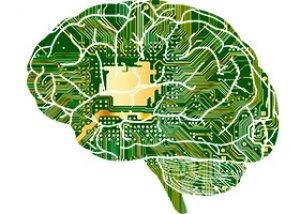
All iLive content is medically reviewed or fact checked to ensure as much factual accuracy as possible.
We have strict sourcing guidelines and only link to reputable media sites, academic research institutions and, whenever possible, medically peer reviewed studies. Note that the numbers in parentheses ([1], [2], etc.) are clickable links to these studies.
If you feel that any of our content is inaccurate, out-of-date, or otherwise questionable, please select it and press Ctrl + Enter.
New development by neuroscientists allows to "retrieve" images from human memory
Last reviewed: 02.07.2025
 ">
">Neuroscientists from the Canadian University of Toronto have come up with a method for digitally reproducing faces present in a person’s memory.
In the study, scientists read data from an electroencephalograph attached to volunteers after they were shown various images of faces. The device recorded brain waves, and a special hardware training program recreated the face that had previously been shown to the participant.
“The moment a person sees an image, the brain forms its mental outlines,” explains Dan Nemrodov, one of the project’s leaders. “We were able to register them using EEG and obtain a direct image.”
The technique of "image reproduction" can use both EEG and fMRI. Electroencephalography records electrical brain activity through electrodes fixed to the patient's head. Functional magnetic resonance imaging involves the use of a magnetic field to assess blood flow in various areas of the brain. Both methods have their "pros" and "cons", but EEG is used more often - mainly due to its low cost and the ability to make accelerated recordings.
"Encephalography is able to record millisecond activity, which allows us to see finer details of the image," explains the professor.
Thanks to the precise and detailed results, the experts were able to share the following information: the human brain is capable of creating a high-quality mental image of the face it currently sees in just 170 milliseconds.
The researchers plan to improve the technical equipment in the near future. Their goal is to create a virtual reproduction of images recorded in the human brain some time before the examination.
"This technique should help patients who have difficulty communicating. It can also be used in forensic medical examinations to collect the necessary information. Until now, such information consisted only of verbal descriptions of the pictures that eyewitnesses saw."
Previously, scientists had conducted similar experiments, trying to reproduce the visual dynamic images that form in the brain when watching videos. It was assumed that such a technique would later help to view the hallucinatory visions of mental patients on a monitor. The study involved using an MRI scanner, which recorded in detail the cellular activity in different areas of the visual cortex.
The scientists who initiated the experiment themselves took turns becoming “subjects” and were placed in the tomograph chamber for several hours at a time.
All the details of the study are presented on the website eneuro.org and medicalxpress.com
